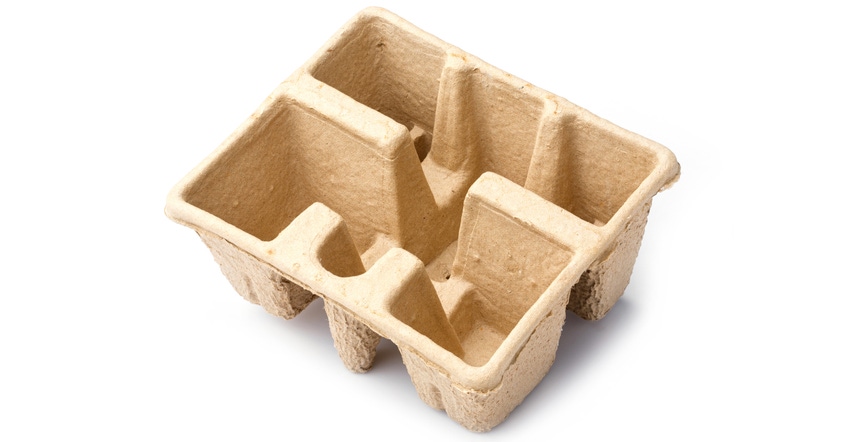Many brands have a veracious appetite for fiber-based packaging as part of their strategy to achieve sustainability goals. So why is there an R&D slump and such a tight supply of molded fiber packaging right now?

The global molded fiber industry today is facing a capacity shortage for two main reasons.
1. The demands for environmentally sustainable molded fiber packaging products has skyrocketed.
2. New manufacturing facilities have not been developed to adequately meet the demands.
These conditions are creating delays that are beginning to limit potential customer’s access to products. Some molded fiber product manufacturers are limiting supply, or not accepting new customers, which is disrupting the overall growth of the molded fiber industry.
For many years, the molded fiber industry has been slow to expand or invest in new and improved manufacturing technology. Molded fiber manufacturers have often failed to support research. This was partly due to competitive low-cost plastic packaging.
However, the market for natural fiber packaging products has been consistently growing for more than a decade.
While there have been some manufacturing improvements, particularly in machinery, and the price gap between plastic and molded fiber products has been narrowed or eliminated, sourcing of molded fiber packaging is becoming an issue for many current and potential customers.
R&D slump.
Even though the process of molding natural fibers into packaging products is seemingly simple, the inherent variables involved make it challenging. This is why research in fiber engineering and manufacturing processes is necessary to move the molded fiber industry forward and address future demands.
Studies are also needed on the types and chemistry of feedstock for manufacturing, to replace or supplement wood fiber-based paper. Many kinds of renewable agricultural materials — such as miscanthus, wheat straw, hemp, and other fibers —are excellent candidates.
The molded fiber industry needs to establish technical design parameters. Needed are basic standards, such as those from the American National Standards Institute (ANSI) or ASTM International, to better understand physical performance characteristics of molded fiber products. Except for some specific customer requirements, no engineering standards for molded fiber products exist today.
Additionally, none of the major packaging universities in the US have the capability today of producing molded fiber samples for the kinds of studies now done for many other kinds of packaging materials, such as corrugated paperboard and polystyrene.
HP sets a good example.
A recent rare advancement, and example of how research of manufacturing of molded fiber products can affect the industry, is the achievement of the HP Co. on tooling.
Costly molds or tooling, which are the determinant of a molded fiber product, have been designed and manufactured essentially the same way for more than 20 years. Although HP had not been previously involved with the molded fiber industry, in the course of implementing corporate environmental policies, the printing and technology company saw the need and opportunity. HP put an engineering team to work, and, after intensive industry study, created new breakthrough tooling solutions. HP’s new tooling is now having significant positive effects on both the molded fiber industry and the environment.
The US needs to invest in new technologies now.
Within the last few years, we’ve seen advancements in molding machines, primarily from Asia and recently in Europe. Some of these machines are now capable of producing molded fiber products that compete in appearance with plastic materials and are more efficient to produce.
However, relatively few of these improved molding systems are in operation in Western markets. With some exceptions, many existing molded fiber product manufacturers — busy with handling customer demand — appear to be reluctant to invest in new technology.
However, by leveraging new technology, the molded fiber industry could see swift expansion, with new markets opting for molded fiber packaging products.
Unfortunately, it is too little and too late to prevent today’s shortages and delays, which will likely continue well into 2022.
There is some good news, though. The global push for environmental sustainability is creating a strong interest in the molded fiber segment of global packaging. That means the industry is on target for significant and rapid growth in the near future and for many years to come.
About the Author(s)
You May Also Like




